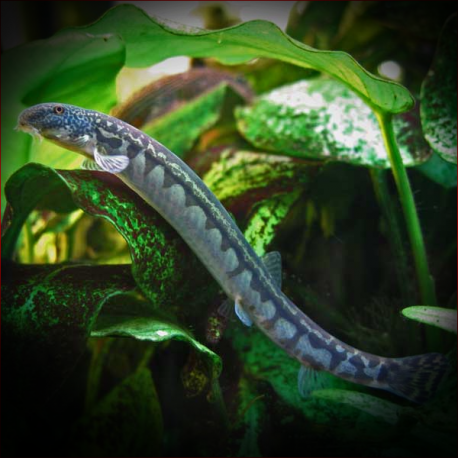More info
Datasheet
| Minimum Tank Size | 80 litres / 21.13 US gallons |
| Maximum Size | 11.0cm / 4.33inches |
| Temperature | 20°C / 68.00°F - 24°C / 75.20°F |
| Hardness | 0.00dgH / 0ppm - 8.01dgH / 143ppm |
| pH | 6.5-7.5 |
General DescriptionNiwaëlla delicata, commonly known as Ajime Loach, is a species native to the river drainages of central Honshu, Japan's largest island. The fish exhibits a dark longitudinal stripe or blotches running along its lateral line, distinguishing it from other members of the genus. Belonging to the Cobitidae family, it is prized as a food fish in its native habitat.
Aquarium SetupThe aquarium setup for Niwaëlla delicata requires clean, well-oxygenated water with a turnover of 10-15 times per hour. A substrate of gravel or sand with water-worn rocks and pebbles is recommended. Utilizing aged driftwood is suggested, avoiding new pieces to prevent water discoloration. Live aquatic plants like Microsorum and Anubias spp. can be included, with stable water conditions and a tightly-fitting cover essential.
BehaviourAjime Loach is peaceful but selective in tankmate choices, thriving in groups of four or more. It is loosely territorial towards conspecifics, requiring their presence for optimal health. Compatible species include Barilius, Garra, Devario, and Rasbora, among others. Occasional harmless squabbles may occur, particularly with some catfish species.
Feeding and DietIn the wild, Niwaëlla delicata feeds on benthic algae and micro-organisms. In captivity, it accepts dried foods, live or frozen bloodworms, and homemade gelatin-bound foods rich in vegetables and Spirulina. Providing algae-covered surfaces in the tank is crucial for long-term success. Maintaining a separate "algae nursery" may be necessary if the main tank lacks sufficient algae growth.
Reproduction & DimorphismInformation on the reproduction of Ajime Loach is currently unrecorded. Males lack a lamina circularis on pectoral fins, making sexing difficult in young specimens. Older females grow larger than males, developing a deeper body shape. This species displays sexual dimorphism and unique characteristics for distinguishing between sexes.
Habitat and DistributionNiwaëlla delicata inhabits shallow, fast-flowing headwaters and minor tributaries in Japan. These habitats feature riffles, runs, and pools with substrates of rocks and gravel. Clear, oxygen-saturated water supports the growth of biofilm, essential for the species. During winter months, the loach enters dormancy before emerging to spawn, alongside other native species like Rhinogobius flumineus and Cottus pollux.

